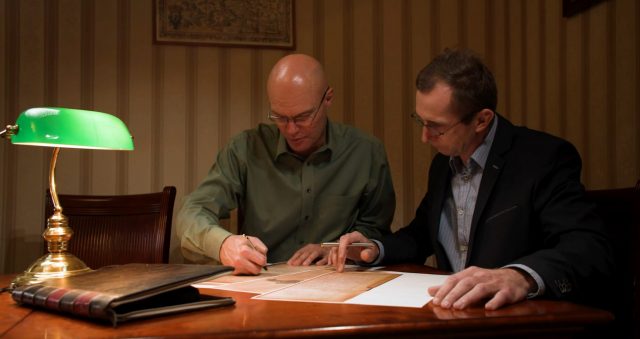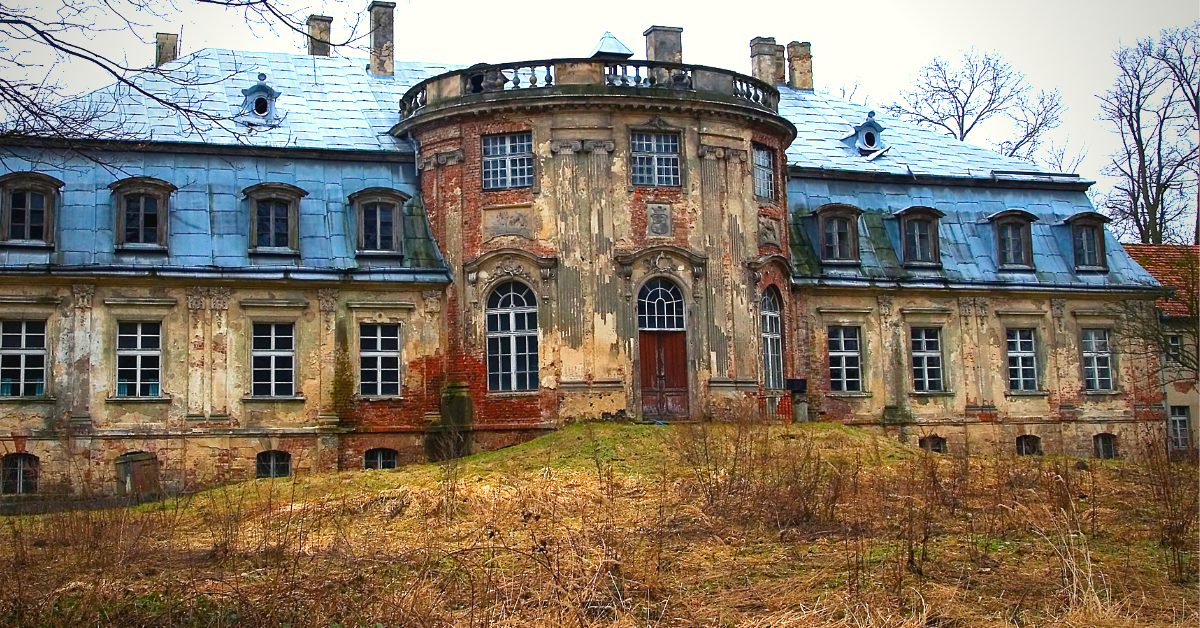Are 10 tons of ill-gotten gold plundered by the German army during World War II lying under Minkowskie palace in Poland? A secret diary kept by an SS officer claims this is the case. If he’s right, the haul is worth an estimated half a billion pounds or several hundred million dollars!
On the hunt for plundered gold under Minkowskie Palace
The Silesian Bridge Foundation, led by Roman Furmaniak, took the lease on an 18th-century regal property in Minkowskie village in south-western Poland. Today, it’s in a far-from-illustrious state, but back during World War II, it was part of German-occupied territory.

The SS made use of the palace, but a different kind of immorality was on the agenda. Behind closed doors, it reportedly doubled as a brothel! And as the drinks flowed and clothes came off, buried secrets were revealed.
Descendants of the men involved provided the Foundation with a diary, written by a figure who referred to himself as “Michaelis” (a pseudonym). The historic pages detail an astonishing 11 places in the region where gold stolen by the Nazis ended up after being looted.
Committing his thoughts to paper, Michaelis mentions the palace’s orangery. An assortment of treasure is apparently buried in a trough “48 chests from the Reichsbank, in good condition, […] hidden, very well covered with earth and ‘greened’ with still-living plants.”
The entry is dated 1945, the last year of the war. The Reichsbank was the Nazi Central Bank. According to The Sun, “the authenticity of the diary has not been verified.”
It is these 48 crates that Furmaniak and company hope to get at. The Minkowskie palace, thought to be the most accessible, forms the starting point of a hunt that may cover all 11 listed locations.
Why was the gold looted in the first place? Head of the SS Heinrich Himmler reportedly hoped to use the money to fund a Fourth Reich, following on the Führer’s Third. Thankfully, his plan was unsuccessful.
Also supplied to the Foundation are additional documents and a map — it wouldn’t be a treasure hunt without one. One document is a letter penned by a “von Stein” to his lover Inge, who was based at the palace. The missive makes reference to the 48 containers, which he entrusts to her!
Furmaniak and his team believe they have enough evidence to proceed. Especially exciting is the prospect of finding the famous “Gold of Breslau.” This was taken from police HQ in Wrocław. Breslau is the city’s former name.
Alongside the stolen gold are the everyday items of local bigwigs. The Mail reports that “jewelry and valuables from the private collections of wealthy Germans” in the area were acquired and added to the pot.
What made them hand over their possessions? It was apparently “in order to protect them from being looted by the advancing Red Army.” The Russians were on the march, and the tide of the war was turning.
This isn’t the first time people have searched for looted treasure
German efforts to acquire their enemy’s riches have inspired a few stories. The 1975 movie Inside Out starred James Mason and Telly Savalas. This release focused on a criminal enterprise to bag Nazi treasure. On a nobler note, The Monuments Men (2014) directed by George Clooney involved Allied attempts to return cultural artifacts.
Truth, as ever, is stranger than fiction. The Minkowskie palace gold is reportedly connected to an ancient masonic lodge going back approximately 1,000 years.
Taking their name from the German town of Quedlinburg, the members of this clandestine group allied themselves with the Nazis. The Sun writes that the Quedlinburg lodge took top positions in Hitler’s organization.
Over in Germany, Hartenstein Hills may play host to the legendary Amber Room. This dismantled treasure of Peter The Great was packaged up and removed from Catherine Palace near St. Petersburg. Various places have been identified as the Room’s final destination. Hartenstein Hills joined the list in 2017, after research undertaken by what The Sun described as amateur sleuths.
More from us: The Nazi Plunder: Haunting History of the Artworks Stolen During WWII
Argentina is another far-flung hiding place allegedly used by the Nazis. South America became home to many escaped war criminals. Patagonia is highlighted in The Sun as a destination for the Third Reich and their trophies.
Furmaniak is leading the hunt at Minkowskie palace starting next month. The aim is to bring unity and reconciliation, closing the book on a turbulent and traumatic chapter of 20th-century history.
